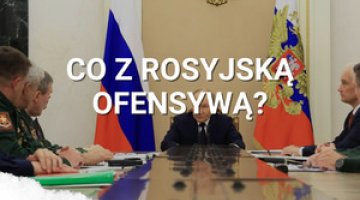Analyses
As the situation in Dagestan deteriorates, the entire region may become destabilised
The situation in Dagestan, which is located in the Russian-controlled Northern Caucasus, seriously deteriorated during the last days of August. Sheikh Said Afandi (Atsaev), the republic’s most respected religious leader and the greatest spiritual teacher of the local Sufi school of Islam, was killed in an attack on 28 August. On the same day, a Russian military post next to the border with Azerbaijan was attacked. On 28 and 29 August, Georgian troops broke up a unit of militants who came from Dagestan and freed their hostages.Eleven militants and three Georgian officers were killed.
Commentary
- Dagestan is the most unstable republic in the Northern Caucasus. Between January and July this year, 239 people were killed in attacks, clashes and terrorist acts there (413 were killed in 2011). According to various estimates, as many as nearly 2,000 militants operate in this republic. At the same time, the great diversity of ethnic groups and the presence of competing business-and-criminal clans have prevented the disintegration of Dagestan and a civil war (none of the nations or groups is strong enough to predominate over the others). This unsteady balance may be upset due to increasing escalation of the tension.
- One of the axes of conflict in the republic is the rivalry between the followers of traditional Sufi Islam and the supporters of Salafism, ‘pure’ Islam, which is free of local influences (radical Salafis are the base of the underground armed forces). Said Afandi had a significant impact on politics in Dagestan (many of the ministers, MPs and representatives of the official religious authorities were his students). He propagated dialogue between the two movements of Islam. The assassination of the sheikh had features of provocation, which was aimed at breaking this dialogue and fuelling mutual enmity. It could have been plotted by the most radical Salafis or possibly by Russian law enforcement agencies which needed a pretext for launching an operation aimed at tightening Moscow’s control of the republic. The latter version could be backed by the fact that a contingent of internal troops of the Interior Ministry, at least several thousand strong, was deployed in Dagestan in spring this year.
- Said Afandi’s death can become a catalyst for a wave of religion-based violence. Retaliation against Salafis and military responses from the Salafis themselves are a likely scenario. The president of Dagestan, Magomedsalam Magomedov, ruled that self-defence troops should be formed in the entire republic, which is proof of the government’s weakness and may lead to more bloodshed.
- No details of the militants’ entry to Georgia are known. However, provocation aimed at spreading unrest before the parliamentary election scheduled for 1 October cannot be ruled out in this case, either. The fact that Georgian citizens of Chechen nationality (living and operating in the Russian-controlled Northern Caucasus) were among the attackers and past precedents could indicate that the action had been inspired by Russian law enforcement structures (the Georgian opposition are suggesting that this has been staged by the government in Tbilisi, which seems rather unlikely). The activation of the underground armed forces gives rise to fears that similar actions could be repeated and thus the stability of the Southern Caucasus could be put at stake (especially if they are correlated to the exacerbation of the crisis over Iran). There is a risk that this lack of stability could be exported from Dagestan to Azerbaijan (the residents of the areas located on both sides of the border include Lezgians and Avars, who are receptive to Salafi slogans) and to Georgia.
Additional research by Marek Matusiak




